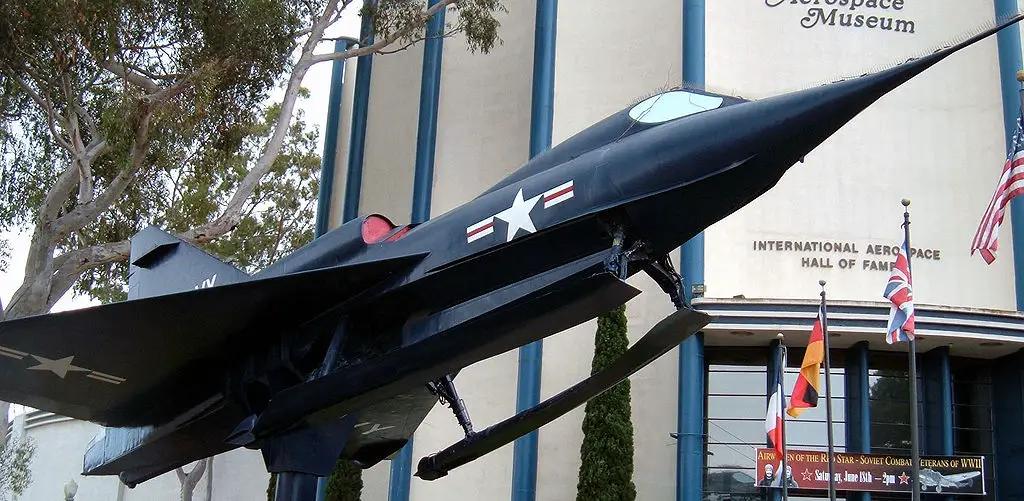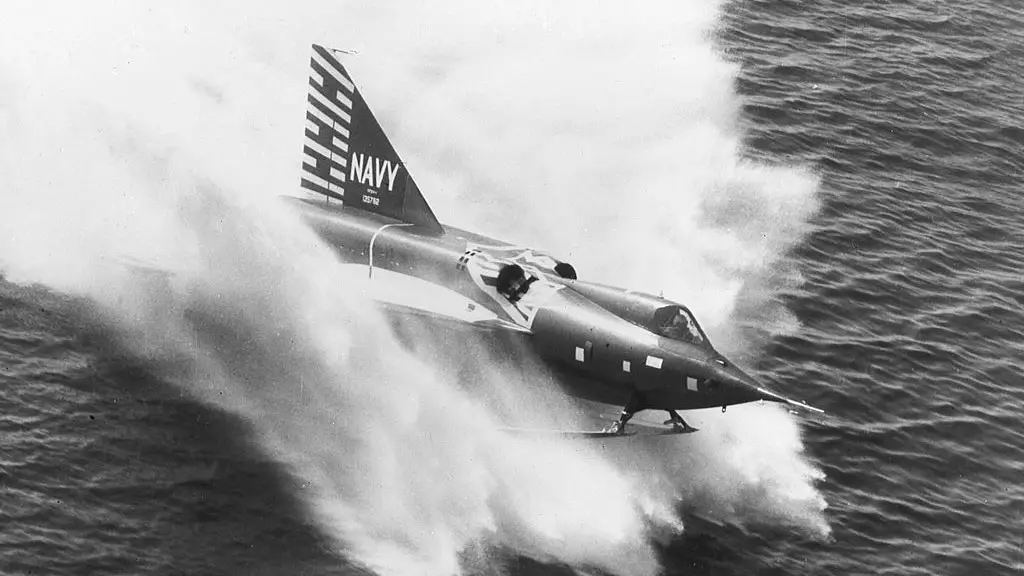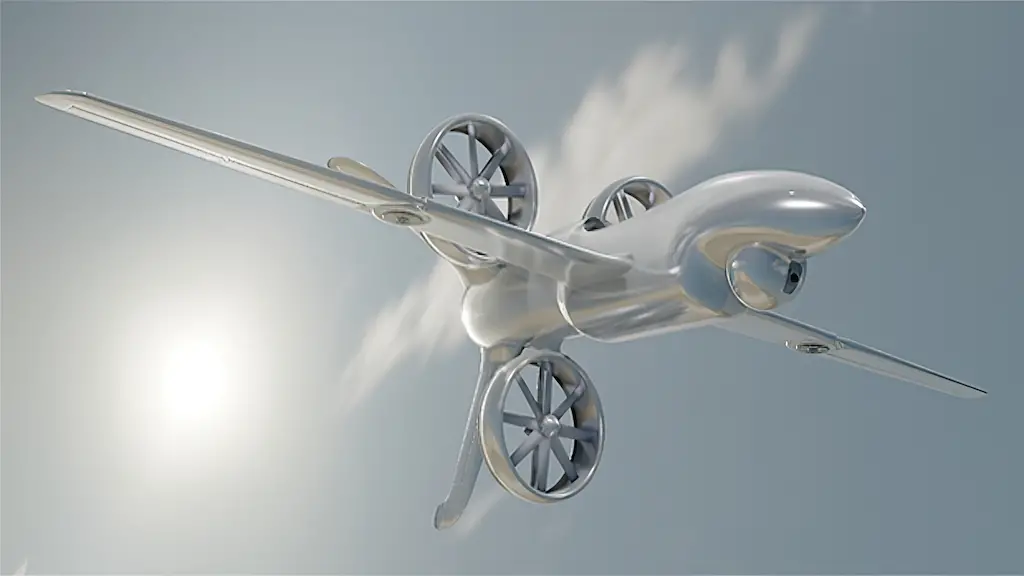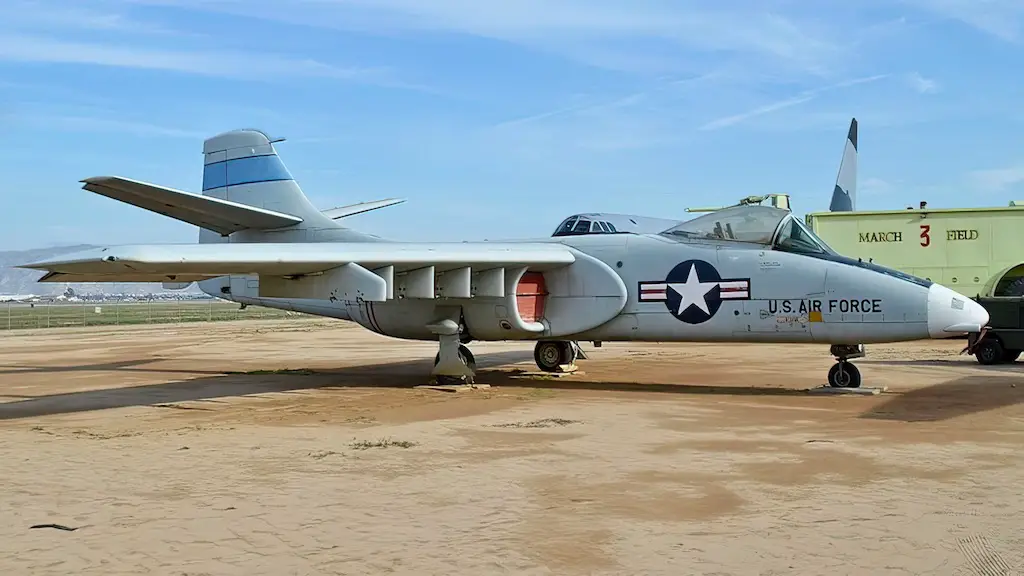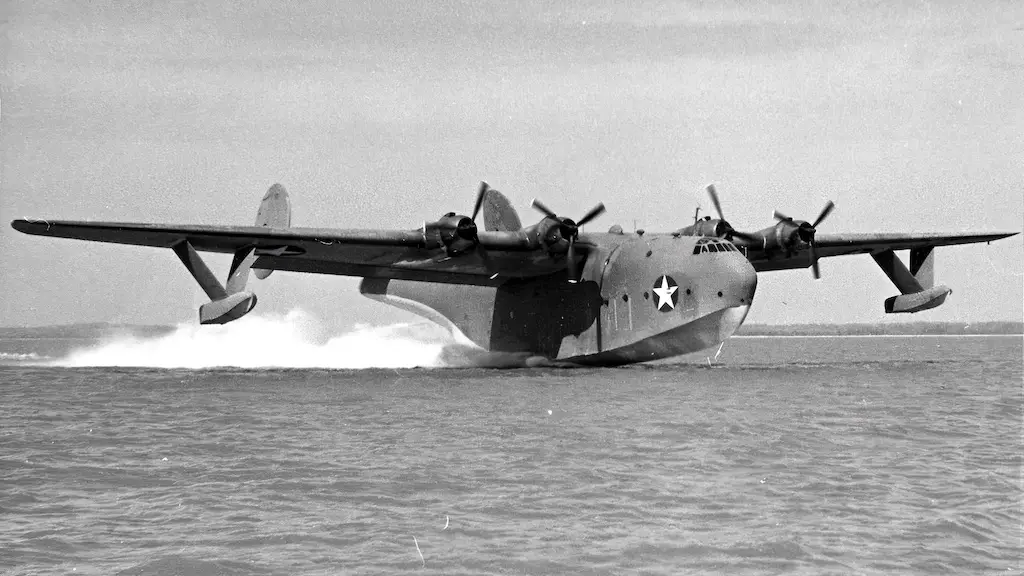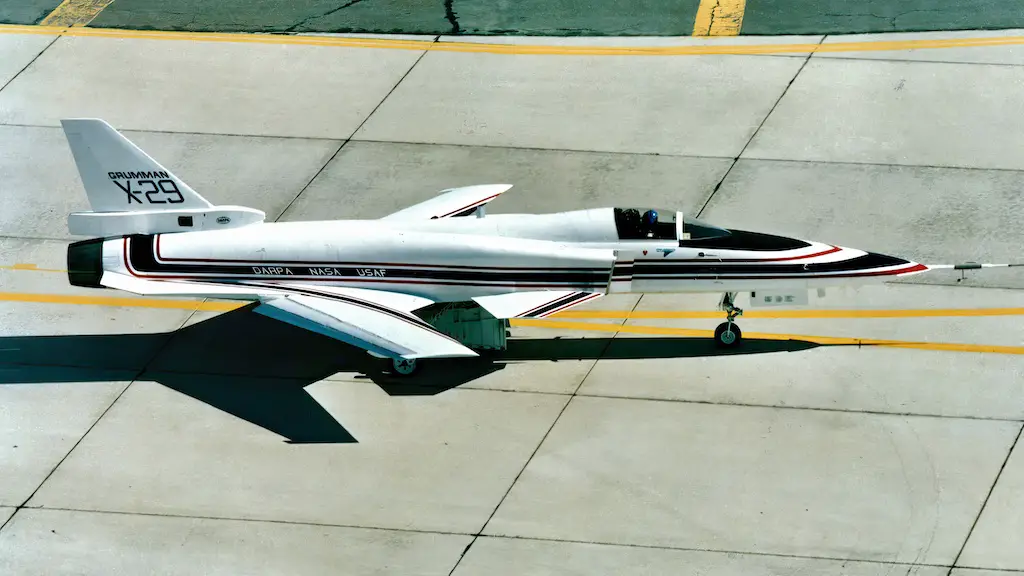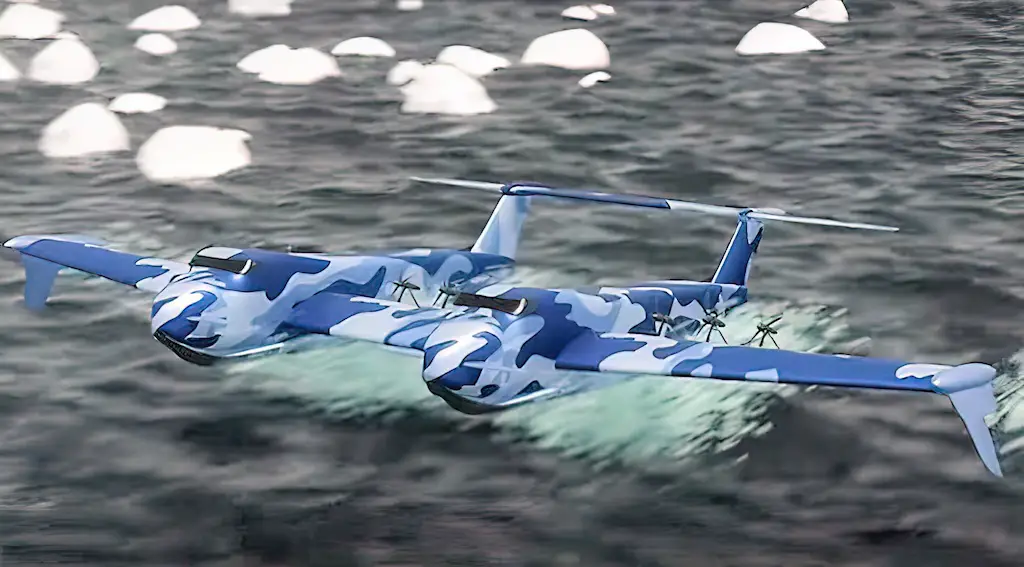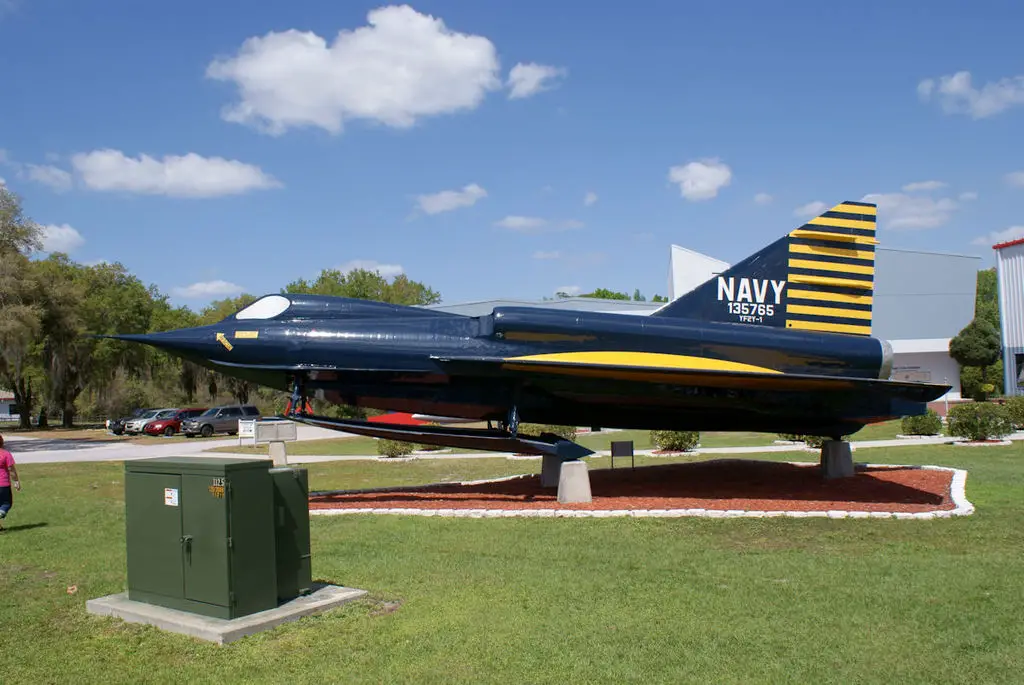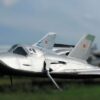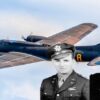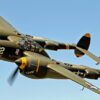A common weakness of propeller seaplanes is their high aerodynamic drag, resulting in part from the need to provide a good clearance for the propeller by rising it well above the water. Jet aircraft did not share that problem, so creating a jet-propelled seaplane which would be as aerodynamically perfect as its land-based brethren seemed to be a good idea.
Besides, in the early years of supersonic jets their operation off carrier deck was considered problematic due to high approach speeds, long take-off rolls and general instability inherent to early supersonic jet designs. In mid 1950s, a combination of these factors precipitated the creation of Convair XF2Y-1 Sea Dart, the world’s first and only supersonic seaplane.
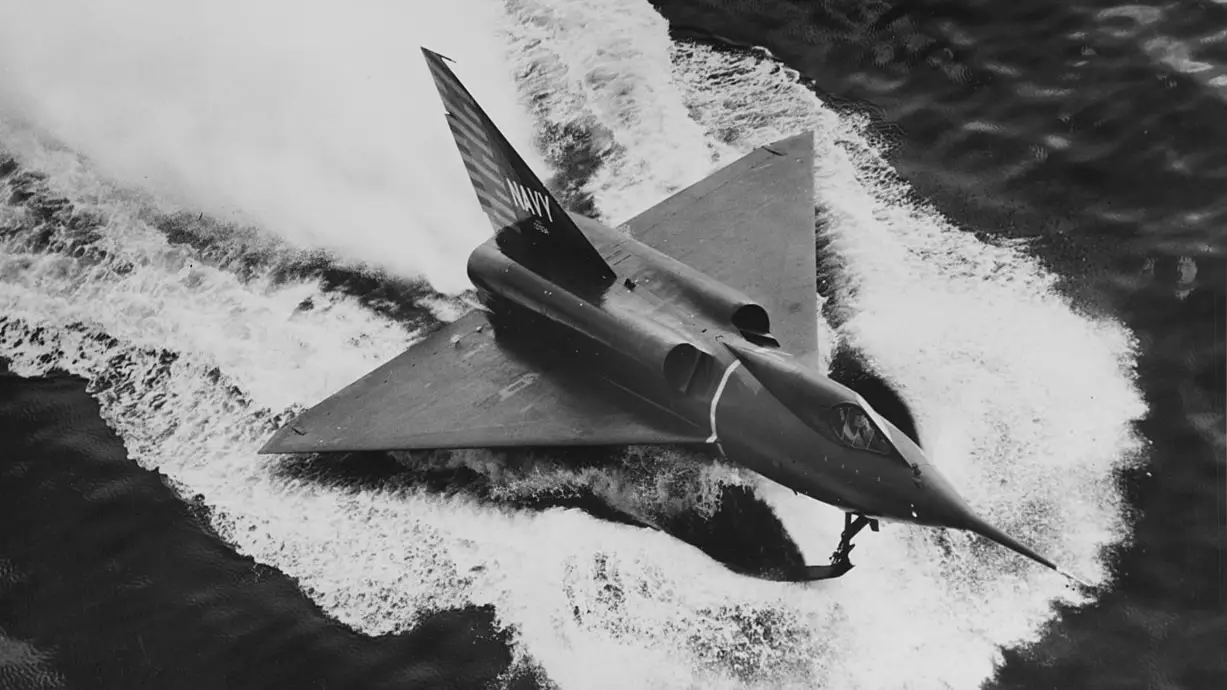
In 1951 the US Navy awarded the contract for a waterborne jet fighter to Convair, which had been experimenting with jet seaplane designs for several years. On April 9, 1953, the Sea Dart, a delta-winged twin-engine jet aircraft, made its first flight.
It took off and landed on a pair of retractable hydroskis (there was also a single-ski variant), but other than that it bore more resemblance to standard land-based jet aircraft of the time than to the traditional flying boat designs. When at rest, the Delta Dart’s wings’ trailing edges touched the water surface. The ski or skis started extending after it accelerated to 10 mph. The aircraft could operate in waves up to 10 ft high.
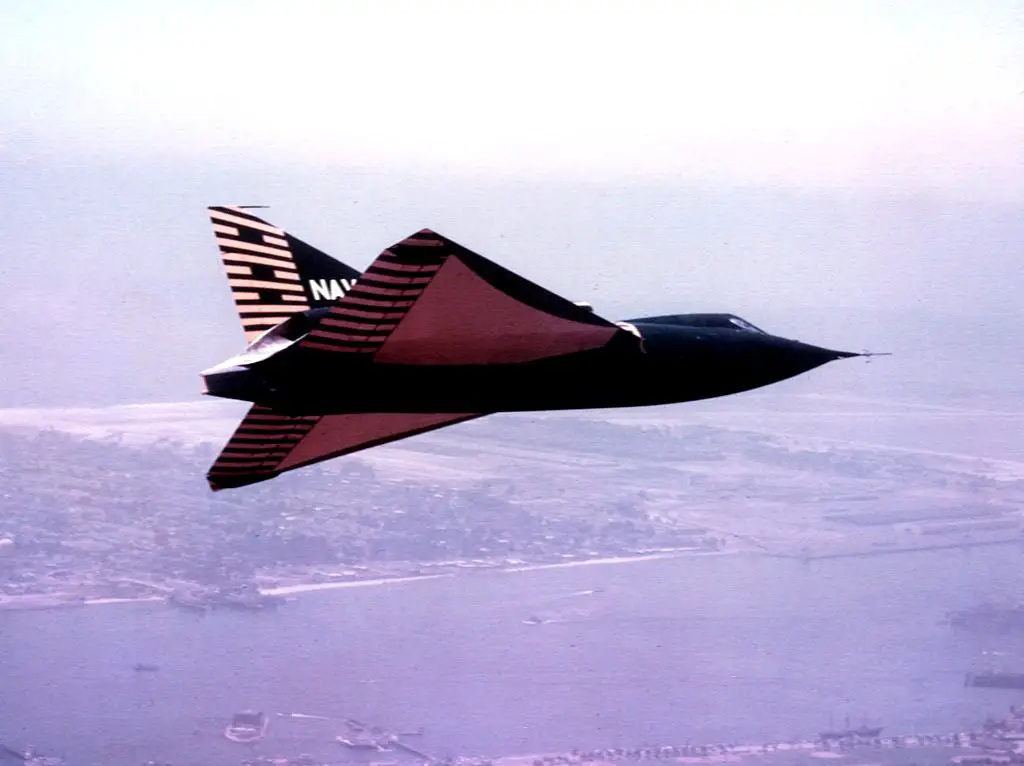
Despite being conceived as a supersonic aircraft, Delta Dart struggled to break the sound barrier. It was able to reach Mach 1 only in a shallow dive. Despite all efforts, the Sea Dart never achieved supersonic speed in a level flight. Replacing its pair of Westinghouse J-34 engines with more powerful J-46s didn’t help either.
In 1954 a Sea Dart making a demonstration flight for Navy brass and members of the press disintegrated in the air over San Diego Bay at 575 mph, killing its pilot. The fly-past was broadcasted live on TV. That tragedy lead to the cancelation of the Navy order for production F2Y-1s, although test flights under the program continued for three more years.
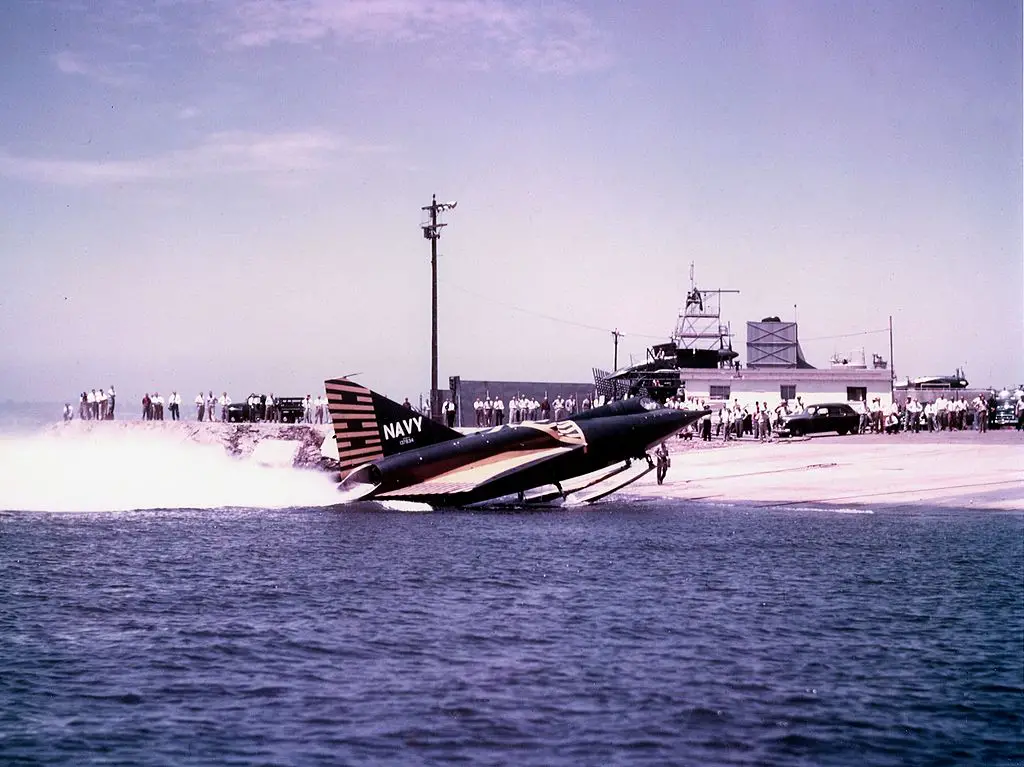
Albeit there were no other deadly accidents with the Sea Dart, pilots did not consider it a very pleasant and comfortable aircraft to fly because the hydroskis caused violent vibration on takeoff and landing.
In 1957 the Sea Dart Program was completely abandoned. Convair experts had succeeded in solving some of the plane’s most serious problems and it was more or less ready for service, but by then the whole concept of seaborne combat aircraft had become unpopular among the US military leadership. Сarrier-based jets were becoming more reliable and efficient by the year. And given the Sea Dart’s rather unimpressive speed characteristics (as compared to land and carrier-based aircraft), its air-to-air combat capabilities weren’t very promising.
Convair built a total of five Sea Darts, but only three were flown. Four of them are still to be found in various U.S. museums.
